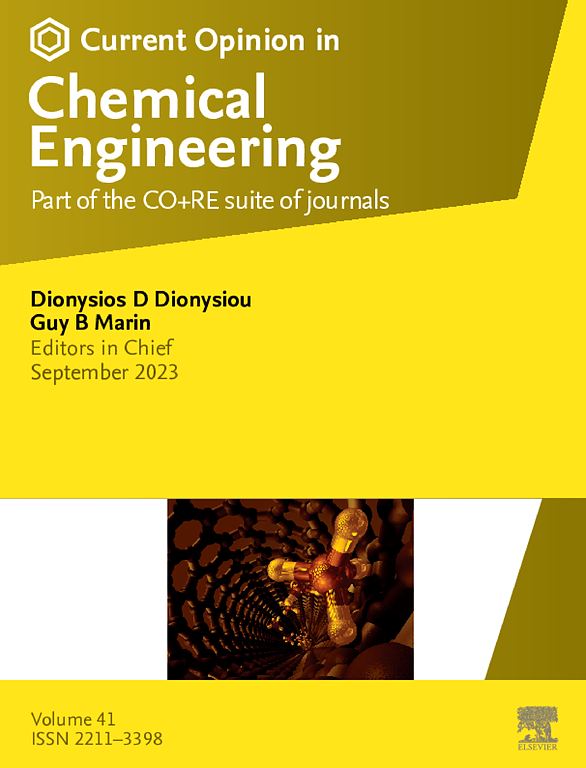纳米塑料减缓技术:挑战和可持续性考虑
IF 6.8
2区 工程技术
Q1 BIOTECHNOLOGY & APPLIED MICROBIOLOGY
引用次数: 0
摘要
塑料污染的增加导致其微小碎片广泛污染环境,构成了令人担忧的环境威胁和健康风险。纳米塑料,NPs (<1000 nm)由于其增强的反应性,跨越生物屏障的潜力以及与环境基质的复杂相互作用而特别受到关注。尽管聚苯乙烯仅占全球塑料产量的4.5%,但实验室研究严重依赖合成聚苯乙烯珠。现实世界的NPs以异聚集体的形式存在,具有生态电晕层,显著改变了它们的反应性和毒性。此外,NPs与重金属和有机污染物相互作用,改变了它们的命运,改变了运输和修复结果。这一观点讨论了当前水处理厂工艺的局限性,强调了新兴的缓解技术、相关挑战以及将其纳入现有处理环境的可能性。增强型吸附、纳米膜过滤、光催化降解、磁性微型机器人、乳剂、深度共晶溶剂和等离子体技术显示出最初的前景,但面临着诸如现有处理装置的集成、高成本、再生困难和潜在的二次污染等挑战。未来的研究应侧重于使缓解技术适应不同的环境基质,并将其纳入现有的设置,确保可持续性和资源回收,同时实现NPs的完全矿化或回收。本文章由计算机程序翻译,如有差异,请以英文原文为准。
Nanoplastic mitigation technologies: challenges and sustainability considerations
The rise of plastic pollution has led to widespread environmental contamination by their tiny fragments, posing alarming environmental threats and health risks. Nanoplastics, NPs (<1000 nm) are particularly concerning due to their enhanced reactivity, potential to cross biological barriers and complex interactions with environmental matrices. Laboratory studies rely heavily on synthetic polystyrene beads, despite polystyrene constituting only 4.5% of global plastic production. Real-world NPs exist as hetero-aggregates with eco-corona layers, significantly altering their reactivity and toxicity. Furthermore, NPs interact with heavy metals and organic pollutants, modifying their fate and altering transport and remediation outcomes.
This perspective discusses the limitations of current water treatment plant (WTP) processes, highlighting emerging mitigation technologies, associated challenges, and the possibility of their incorporation into existing treatment settings. Enhanced adsorption, nano-enabled membrane filtration, photocatalytic degradation, magnetic microrobots, emulsions, deep eutectic solvents, and plasma technology show initial promise but face challenges like integration in existing treatment setups, high costs, regeneration difficulties, and potential for secondary pollution. Future research should focus on adapting mitigation techniques to diverse environmental matrices and their integration into existing setups, ensuring sustainability and resource recovery while achieving complete mineralization or recovery of NPs.
求助全文
通过发布文献求助,成功后即可免费获取论文全文。
去求助
来源期刊

Current Opinion in Chemical Engineering
BIOTECHNOLOGY & APPLIED MICROBIOLOGYENGINE-ENGINEERING, CHEMICAL
CiteScore
12.80
自引率
3.00%
发文量
114
期刊介绍:
Current Opinion in Chemical Engineering is devoted to bringing forth short and focused review articles written by experts on current advances in different areas of chemical engineering. Only invited review articles will be published.
The goals of each review article in Current Opinion in Chemical Engineering are:
1. To acquaint the reader/researcher with the most important recent papers in the given topic.
2. To provide the reader with the views/opinions of the expert in each topic.
The reviews are short (about 2500 words or 5-10 printed pages with figures) and serve as an invaluable source of information for researchers, teachers, professionals and students. The reviews also aim to stimulate exchange of ideas among experts.
Themed sections:
Each review will focus on particular aspects of one of the following themed sections of chemical engineering:
1. Nanotechnology
2. Energy and environmental engineering
3. Biotechnology and bioprocess engineering
4. Biological engineering (covering tissue engineering, regenerative medicine, drug delivery)
5. Separation engineering (covering membrane technologies, adsorbents, desalination, distillation etc.)
6. Materials engineering (covering biomaterials, inorganic especially ceramic materials, nanostructured materials).
7. Process systems engineering
8. Reaction engineering and catalysis.
 求助内容:
求助内容: 应助结果提醒方式:
应助结果提醒方式:


